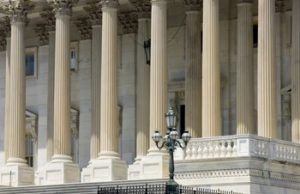
US Supreme Court Justices are nominated for the position by the President of the United States. After they are nominated, the Senate of the United States Congress will hold a committee meeting, during which members of the Senate Judiciary Committee will interview any prospective Supreme Court judges. In recent years, the Senate nomination hearings for the Supreme Court justices have become a highly politicized process.
During the Judiciary hearings, prospective Supreme Court judges can expect to have any previous rulings they have issued or any ex parte statements or even membership in organizations outside of the court house examined, as the Senators on the Judiciary Committee attempt to determine the political leanings of each of the US Supreme Court Justices that are appointed to the Court. The Judiciary Committee does so because of the increased partisanship in national politics.
Pinning down the political leanings of the US Supreme Court Justices is less important than nominees for other positions for two major reasons. The first is that the US Supreme Court has traditionally been an apolitical body, focusing more on if the laws which are under review are constitutional than if they adhere to a particular political framework.
This is not to say that US Supreme Court justices are not political, as seen by the fact that former President Howard Taft was appointed to the Supreme Court after he left the Presidency. Rather, politics is a less important concern for Supreme Court justices. The second reason is that the nine Supreme Court justices hold their positions for long periods of time, since the Court is a life long tenure, making it likely that an individual justice’s political beliefs will change while they are on the Court.





























